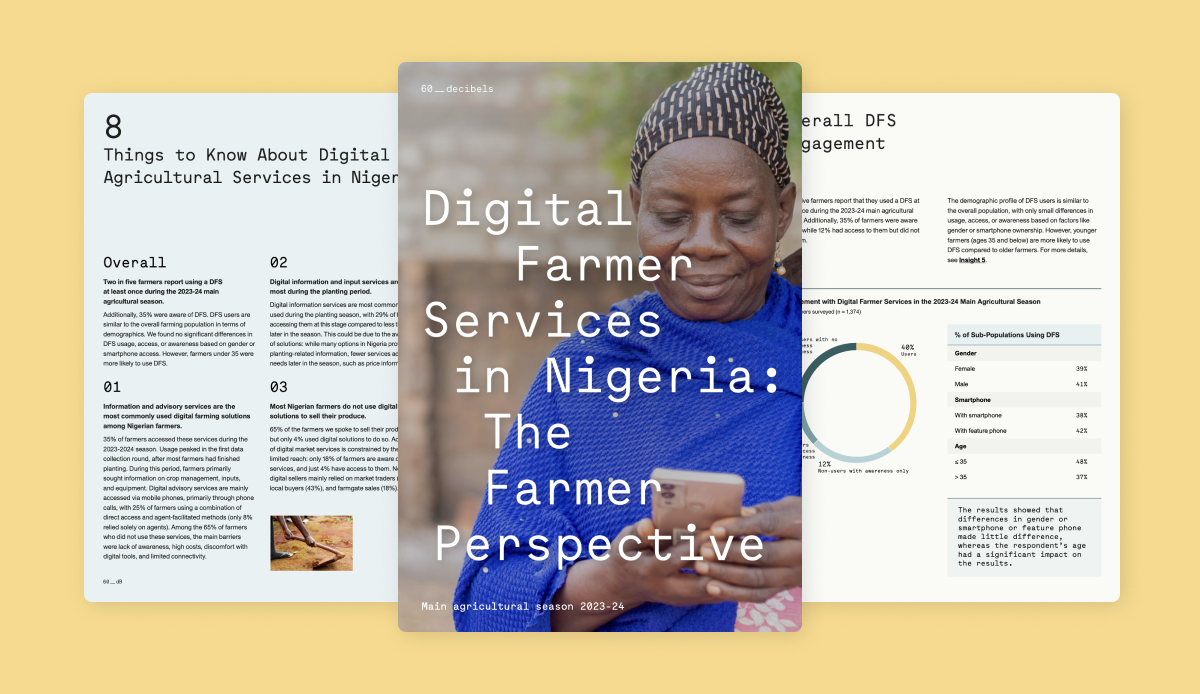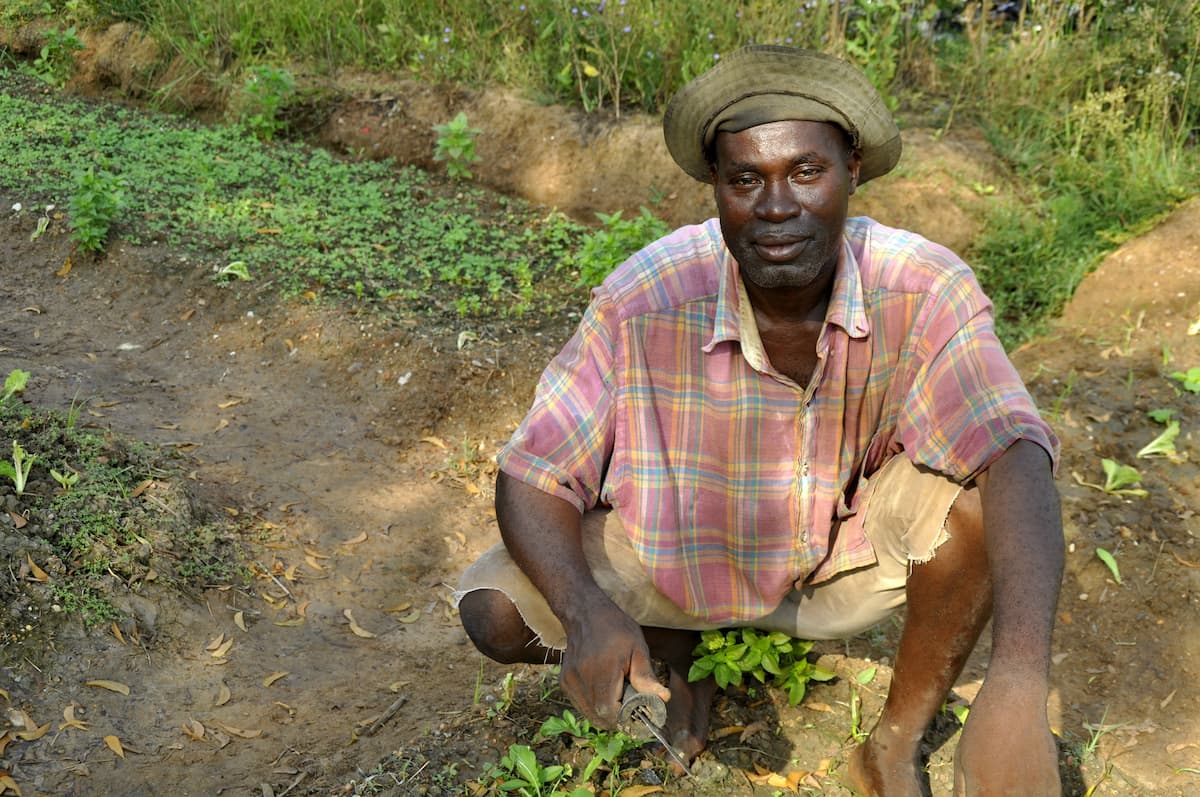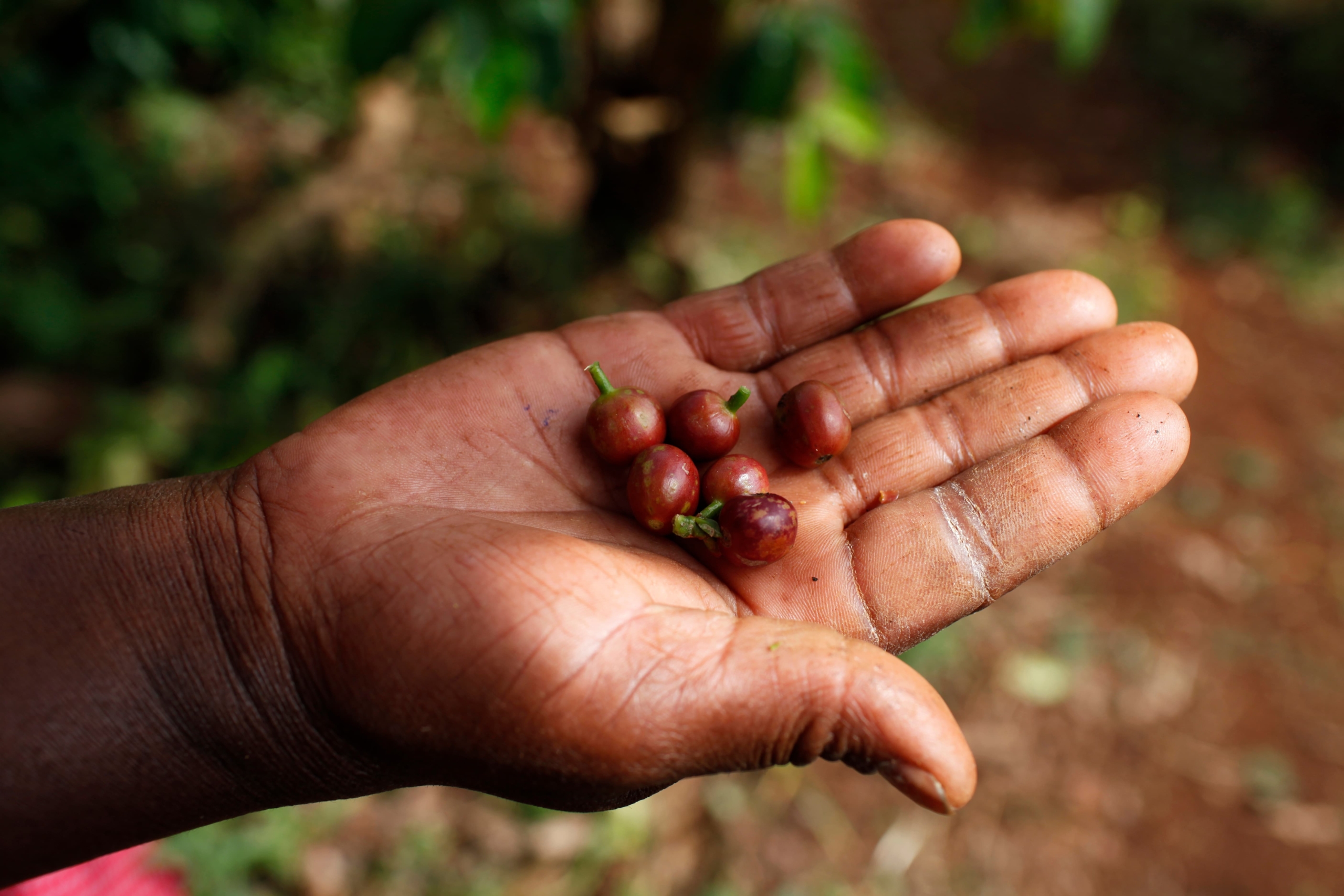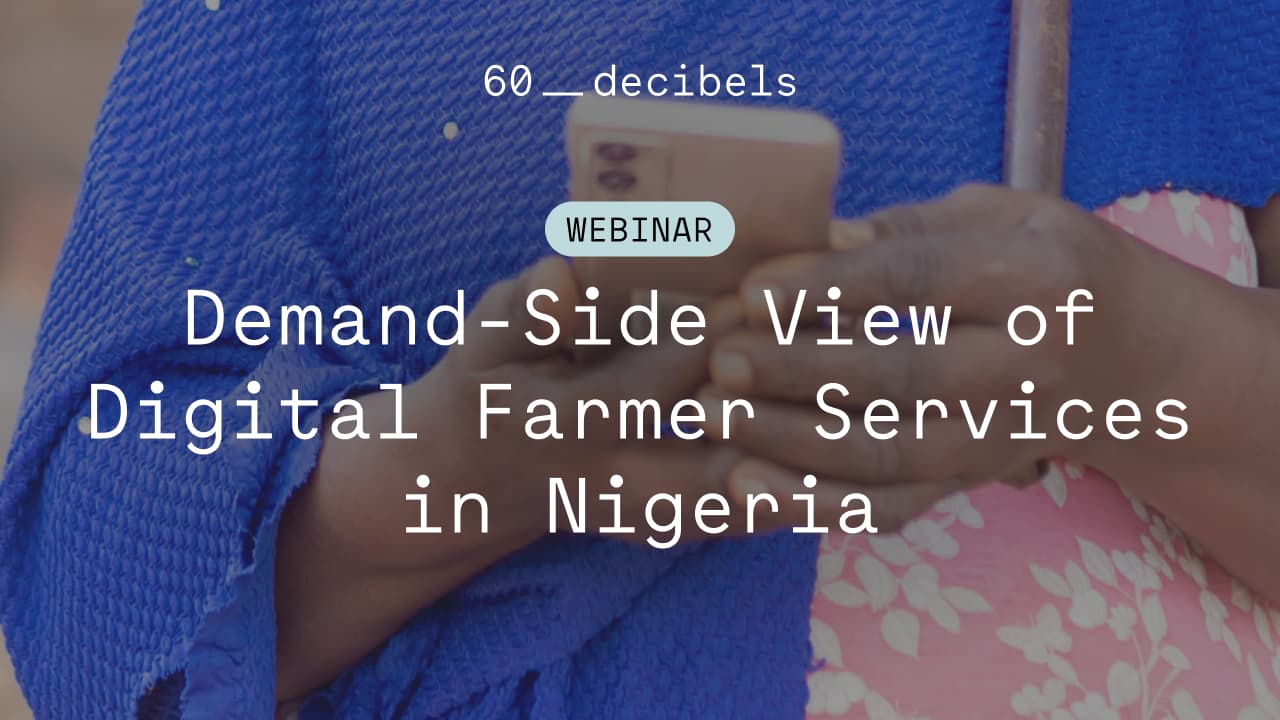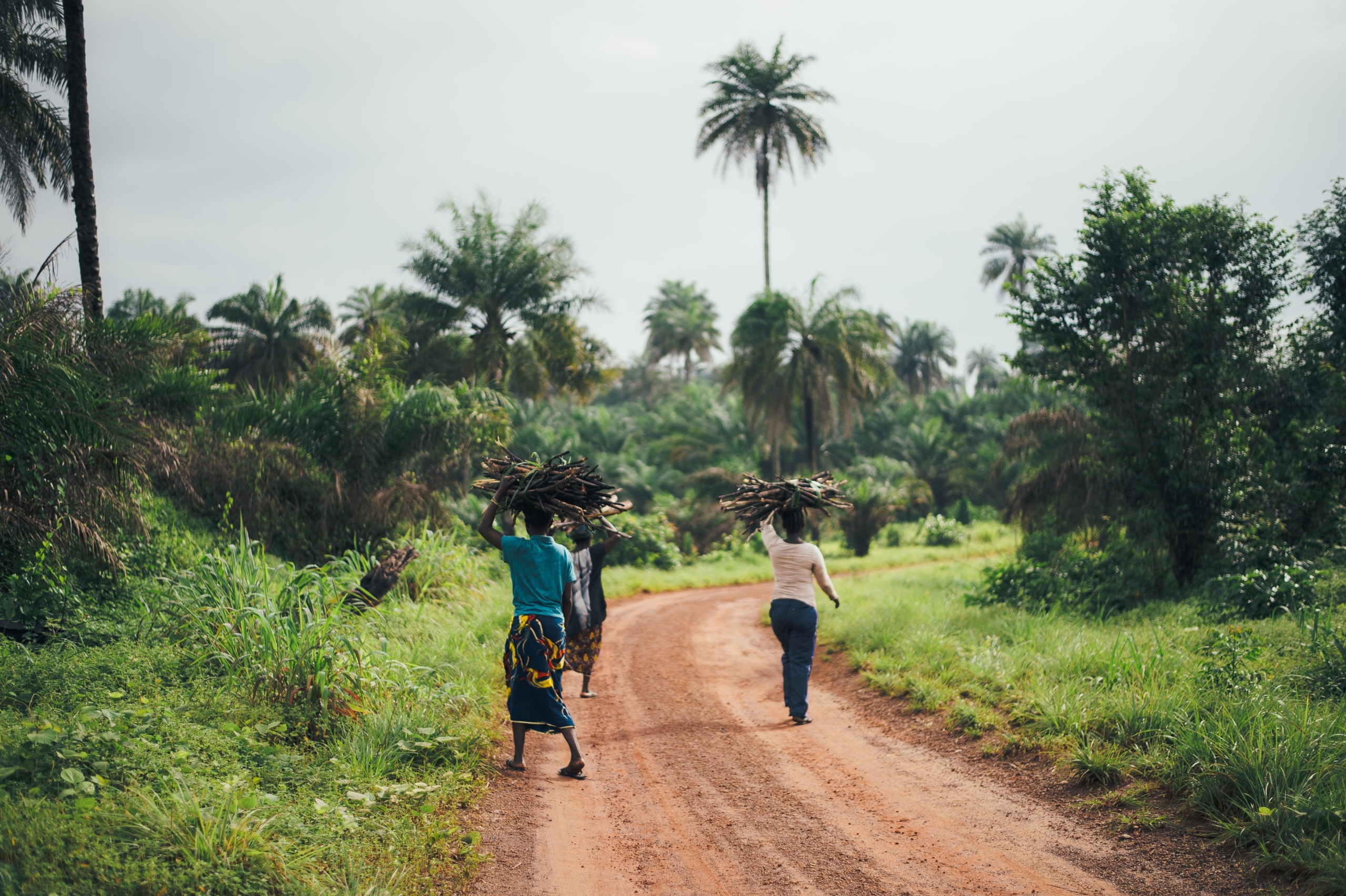
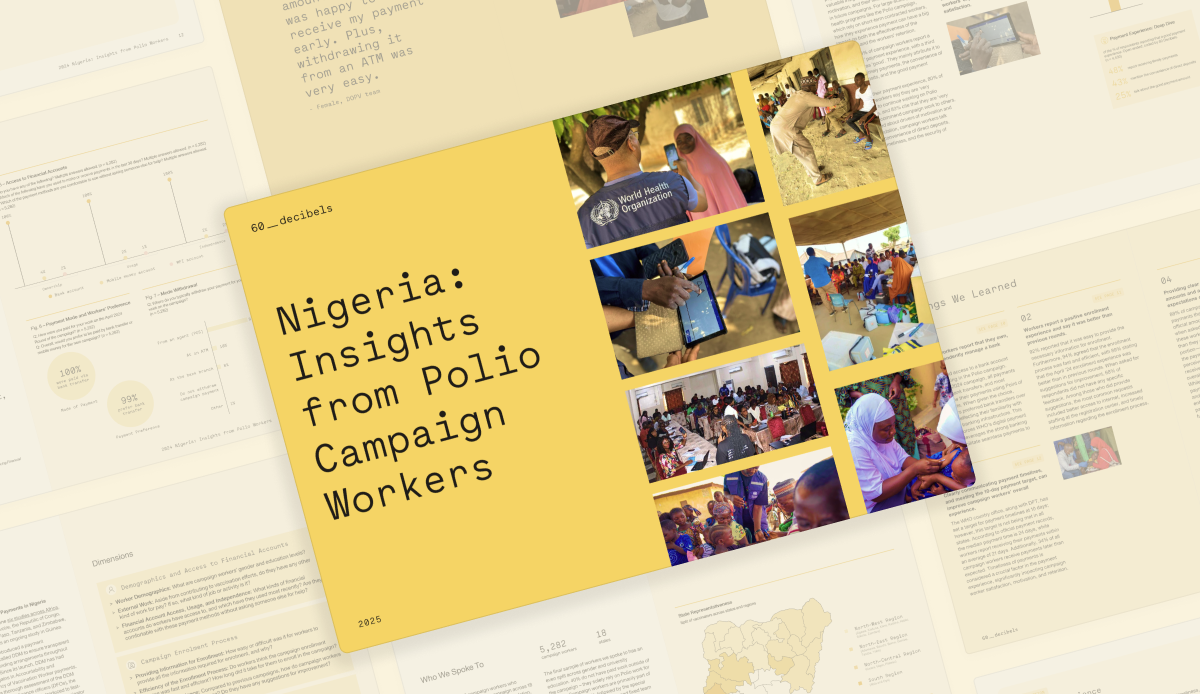
Listening to the Frontline: Voices from 5,282 Polio Campaign Workers in Nigeria
Delays in worker payments have long been a challenge for Polio campaigns, affecting both morale and campaign quality. Digital payments promise faster, more reliable transfers — but how do they affect worker satisfaction and retention?
5,282
18
56%
Building Digital Finance into Polio Response
The WHO Digital Finance Team (DFT) was established in 2020 as part of the WHO Polio outbreak response strategy. Its objective is to support the rollout of digital payments for Polio campaigns and other health programs in the African region.
DFT is responsible for country operations, documentation, partnership management, capacity building, and all other aspects of the digital payment initiative within WHO AFRO. In addition, it aims to build capacity within the WHO to support the adoption of an evidence-based, government-managed digital payment system for all health programs by Ministries of Health.
Context on Digital Payments in Nigeria
60 Decibels has done seven studies across Africa, including Cote d’Ivoire, the Republic of Congo, Liberia, Burkina Faso, Tanzania, and Zimbabwe, and Guinea.
WHO Nigeria introduced a payment arrangement called DDM to ensure transparent and secure funding arrangements throughout the country. Since its launch, DDM has had significant gains in Accountability and Transparency of Vaccination Worker payments. Following a thorough assessment of the DDM process by digital finance officers (DFOs), the CommCare Application was introduced to fast-track data collection and validation of vaccinator accounts, thus ensuring prompt and complete payments.
6 Things We Learned
-
All campaign workers report that they own, use, and independently manage a bank account
Notably, 92% had access to a bank account before participating in the Polio campaign. During the April 2024 campaign, all payments were made via bank transfers, and most workers withdrew their payments using Point of Sale (PoS) agents. When given the choice, nearly all workers preferred bank transfers over mobile money, reflecting their familiarity with Nigeria’s robust banking infrastructure. This preference reinforces WHO’s digital payment strategy, which leverages the strong banking ecosystem to facilitate seamless payments to workers.
-
Workers report a positive enrollment experience and say it was better than previous rounds
92% reported that it was easy to provide the necessary information for enrollment. Furthermore, 94% agreed that the enrollment process was fast and efficient, with 89% stating that the April ’24 enrollment experience was better than in previous rounds. When asked for suggestions for improvement, 68% of respondents did not have any specific feedback. Among those who did provide suggestions, the most common requests included better access to internet, increased staffing at the registration center, and timely information regarding the enrollment process.
-
Clearly communicating payment timelines, and meeting the 10-day payment target, can improve campaign workers’ overall experience
The WHO country office, along with DFT, has set a target for payment timelines at 10 days; however, this target is not being met in all states. According to official payment records, the median payment time is 24 days, while workers report receiving their payments within an average of 21 days. Additionally, 34% of all campaign workers receive payments later than expected. Timeliness of payments is considered a crucial factor in the payment experience, significantly impacting campaign worker satisfaction, motivation, and retention.
-
Providing clear information about payment amounts and addressing workers’ expectations can boost satisfaction
88% of campaign workers report receiving payments that are equal to or greater than the official amounts recorded by WHO. However, when asked about their expectations, 22% of these workers stated that they received less than they anticipated. Additionally, a significant portion—59%—had no expectations regarding the payment amount. Similar to how workers perceive payment timelines, the amount they receive plays a crucial role in shaping their overall experience, motivation, and retention. While the WHO is communicating using payment cards, during implementation training, and on the Commcare app, they can consider enhancing their communication regarding payment amounts to ensure that workers are fully aware and aligned with what to expect.
-
Most campaign workers can easily access their payments and prefer withdrawing from agents. This affects their overall experience
82% are able to reach their nearest payment operator within 30 minutes. This accessibility likely contributes to their preference for Point of Sale (PoS) agents when withdrawing payments compared to other methods. Accessibility impacts satisfaction levels; campaign workers who travel for less than 30 minutes are more likely to report a “very good” payment experience than those who travel longer distances (57% vs. 30%). This, in turn, affects their motivation levels and their likelihood of recommending campaign work.
-
While there are differences in experience amongst workers’ teams, men and women report similar levels of satisfaction
Campaign workers are organized into various teams, with 59% belonging to the H2H team. With others in the Special, DOPV, and Fixed teams. Among these, DOPV workers receive the highest median stipend, perhaps due to more working days, and are most likely to report a “very good” payment experience, as well as higher motivation and recommendation levels. The campaign maintained a nearly equal gender distribution, but women are more reliant on polio work for their income. The roles within the teams differ by gender; male workers are typically community leaders, while women primarily serve as vaccinators. Despite these variations, satisfaction, motivation, and recommendation levels are similar across genders.
Looking Ahead
Listening to workers reminds us that payment isn’t just a transaction — it’s central to morale, trust, and campaign quality. As Nigeria’s experience shows, digital payments are more than a finance solution — they’re a way to value and empower the frontline workers who make Polio eradication possible.
